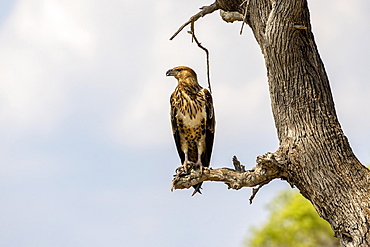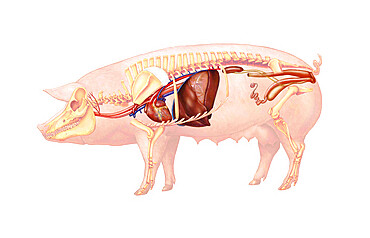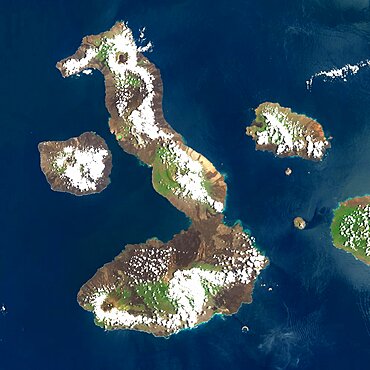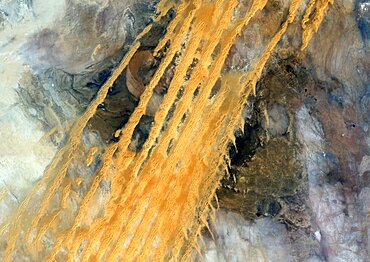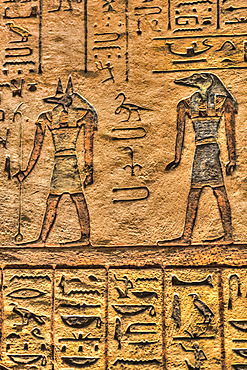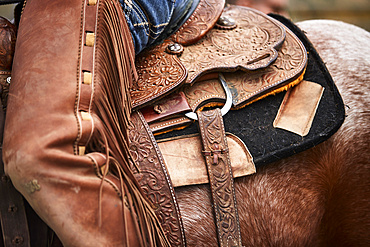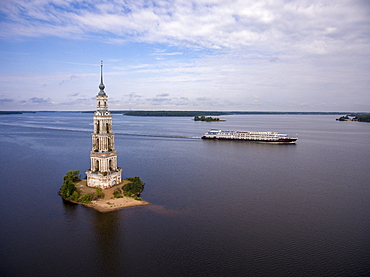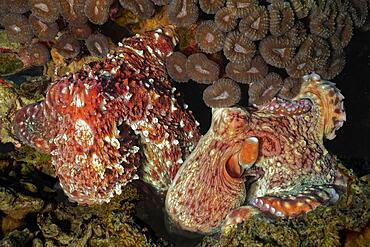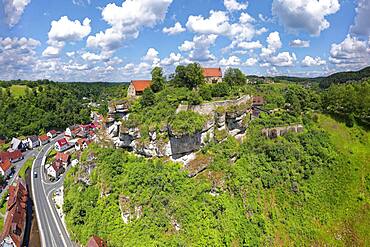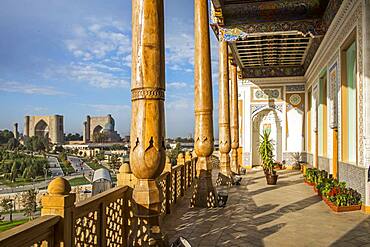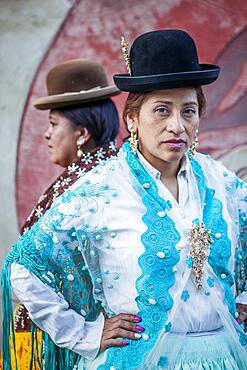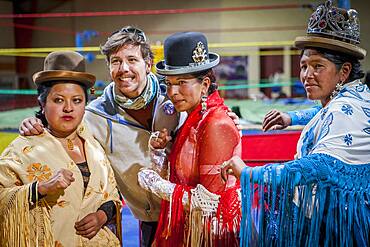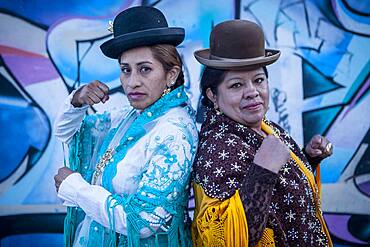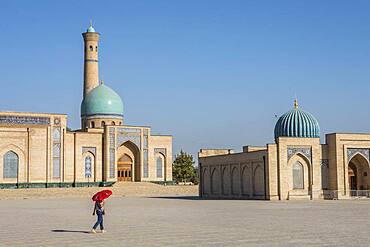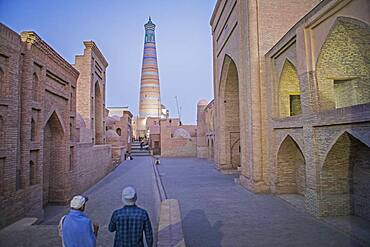Recent searches
Loading...
801-3233 - Evening, Ulug Bek and Tilla-Kari Madrassahs (left to right), Registan Square, Samarkand, Uzbekistan
832-398224 - Incoming bad weather, clouds and fog, Furkahorn on the left, Winterstock behind, Furkapass, Valais, Uri, Switzerland, Europe
785-2453 - Melanes Koros of Flerio, statue left in old quarry, Naxos, the Cyclades, Aegean Sea, Greek Islands, Greece, Europe
1311-501 - Grand Canyon viewed from the cliffs west of Moran Point with Coronado Butte on the far left, Grand Canyon National Park, UNESCO World Heritage Site, Arizona, United States of America, North America
1311-497 - Hance Creek at sunset with Sinking Ship on the left and Coronado Butte right of center right, Grand Canyon, Grand Canyon National Park, UNESCO World Heritage Site, Arizona, United States of America, North America
1311-494 - Hance Creek between Sinking Ship on the left and Coronado Butte right of center right at Grand Canyon, Grand Canyon National Park, UNESCO World Heritage Site, Arizona, United States of America, North America
828-1468 - King's College Chapel, Old Schools and Senate House, from left to right, University of Cambridge, Cambridge, Cambridgeshire, England, United Kingdom, Europe
832-396435 - African fish eagle (Haliaeetus vocifer), juvenile, on branch, looking left, Moremi Game Reserve East, Okavango Delta, Botswana, Africa
860-290683 - A Giraffe, Giraffa camelopardalis, with a dart in the left shoulder. Lake Nakuru National Park, Kenya, Africa.
1336-450 - Czechoslovak Wolfdog portrait looking to the left edited in blue colors, Italy, Europe
746-91219 - The Danube Bend near Visegrad, left the Pilis Mountains, right the Western Carpathian Mountains Europe, East Eruope, Hungary
746-91805 - Marmolada seen from Pas de San Nicolo, left Gran Vernel, right Ombreta. Marmolada mountain range in the Dolomites of Trentino. Dolomites are part of the UNESCO world heritage. Europe, Central Europe, Italy
1350-6035 - At right Torre Telefonica by architect Santiago Calatrava and at left Palau Sant Jordi sports arena by Arata Isozaki. Montjuic, Barcelona, Spain, Europe
1350-6007 - Barcelona: contemporary sculptures in Maremagnum (shopping mall). In background at left Christopher Columbus monument. harbour of barcelona
1350-5100 - The charro rides alongside the left side of the bull, wraps its tail around his right leg, and tries to bring the bull down in a roll as he rides past it
746-90378 - from the left: cowpea, borlotti and black beans.
1350-5069 - the charro rides alongside the left side of the bull, wraps its tail around his right leg, and tries to bring the bull down in a roll as he rides past it
746-90491 - Exhibition of ancient beans, from left: monachello bean, cicerchia, sultan chickpea, black chickpea, roveja .. Macerata, Marche, Italy, Europe
1350-4922 - Sulamani Temple, on left, taken from Pyathatgyi Temple which is also known as Pyathadar Temple, Bagan, Myanmar, (Burma)
832-394993 - Left-hand traffic sign on the road of death, Camino de la Muerte, La Paz Department, Bolivia, South America
832-394994 - Left-hand traffic sign on the road of death, Camino de la Muerte, La Paz Department, Bolivia, South America
832-394650 - Sunset from a summit, Westliche Toerlspitze, mountains in dramatic clouds, Zugspitze on the left, Wetterstein Mountains, Garmisch-Partenkirchen, Bavaria, Germany, Europe
1348-5363 - Anatomy of the cow digestive apparatus. From left to right: mouth and esophagus, the reticulum (brown excrescence on the left), the rumen or composed paunch, from the top to the bottom by the dorsal sac, the cranial sac and the ventral sac. The grey excrescence beneath is the abomasum or velles.
1348-5365 - Anatomy of a sow. From left to right: the heart, the digestive system with liver, pancreas, spleen and stomach. Underneath the ureters and from left to right : ovaries, oviducts, uterus and vagina. Above, the terminal part of the digestive tube (colon) with the rectum.
1348-4557 - Galapagos Volcanoes, Ecuador, True Colour Satellite Image. Galapagos Archipelago, Ecuador, true colour satellite image. Galapagos Archipelago is situated 1000 km West of the Ecuadorian coast. The largest and most volcanically active island in the archipelago is Isabela (6 volcanoes). On the left of image, the island of Fernandina (one volcano). Image taken on 16 March 2001 using LANDSAT data. Print size 30 x 30 cm.
1348-4580 - Desert Erg Iguidi, Algeria, True Colour Satellite Image. True colour satellite image of Erg Iguidi, a sand desert between Algeria and Mauritania. The 250m wide dunes lay in the South on a sand plain, and in the North on a blakek sandstone area. The light blue areas are calcareous and salt crusts left out from the evaporation of the oueds' water. Image taken on 29 March 1987 using LANDSAT data.
1348-3076 - Color satellite image of Abu Dhabi International Airport, United Arab Emirates. The amusement park Ferrari World Abu Dhabi is on Yas Island, at center left on the image. Image collected on September 21, 2017 by Sentinel-2 satellites.
1348-4583 - Hawooi And Kikori Deltas, Papua New Guinea, True Colour Satellite Image. True colour satellite image of the deltas of the rivers Hawooi (left) and Kikori (right)
1348-4475 - Typhoon Mitag, Philippine Sea, Asia, In 2002, True Colour Satellite Image. Typhoon Mitag on 6 March 2002 in the Philippine Sea, north of the Philippines (lower left-hand corner of the image). True-colour satellite image using MODIS data.
1116-50668 - Gods Anubis (left) and Sobek (right), Tomb of Ramses III, KV #11, Valley of the Kings, UNESCO World Heritage Site; Luxor, Egypt
1116-51033 - Millennials (one man, two women) backpacking on a rocky beach with their black lab dog outside of Seward, Alaska to Caine's Head with Resurrection Bay off to the left, on a hazy, summer day; Seward, Alaska, United States of America
1116-52260 - Arrows in Parking Garage at Vancouver General Hospital, Vancouver, British Columbia, Canada
1116-51084 - Leatherwork and closer details of a saddle and chaps to the left side; Eastend, Saskatchewan, Canada
1116-51124 - Guanaco (Lama guanicoe) walking from right to left against blue sky in the desert; Atacama, Chile
1113-107220 - Aerial view of the river cruise ship Excellence Katharina (formerly MS General Lavrinenkov) while passing the Kalyazin bell tower in the Volga river (which is all that is left of the old town of Kalyazin after the Uglich reservoir was flooded), Kalyazin,
832-393637 - Sculptures at the Adam's Gate around 1230, St. Stephen on the left, Cunegund and Henry II, Bamberg Cathedral, Bamberg, Upper Franconia, Bavaria, Germany, Europe
832-393646 - Rainbow in front of waterfall, people on the left, stone desert in the background, Dettifoss, Joekulsa a Fjoellum, Iceland, Europe
832-393705 - Common octopus Octopus vulgaris), mating, male on left inserts mating arm into mantle cavity on female's siphon transfers sperm-filled capsule, Red Sea, Aqaba, Kingdom of Jordan
848-2249 - The Royal Exchange with Bank of England on left, City of London, London, England, United Kingdom, Europe
1350-3154 - Iceberg off the coast of Newfoundland, Canada. With fishing boat at left for scale.
1350-3101 - Pinot Noir wine grapes left on vine after harvest; Ardiri Winery and Vineyards, Tualatin Valley, Oregon.
1350-3102 - Pinot Noir wine grapes left on vine after harvest; Ardiri Winery and Vineyards, Tualatin Valley, Oregon.
1184-5918 - Church of the Holy Trinity on the left, and Cathedral, Sviyazhsk, Republic of Tatarstan, Russia, Europe
1184-5916 - Church of the Holy Trinity on left, UNESCO World Heritage Site, and Cathedral, Sviyazhsk, Republic of Tatarstan, Russia, Europe
1311-374 - Grand Canyon view north of Point Imperial with Woolsey Butte on the left and Mount Hayden on the right, Grand Canyon National Park, UNESCO World Heritage Site, Arizona, United States of America, North America
1311-373 - Point Imperial view from Ken Patrick Trail at Grand Canyon North Rim with Mount Hayden the pointed peak left of center, Arizona, United States of America, North America
832-392412 - The Tasman Sea (left) meets the Pacific Ocean (right), Cape Reinga, Te Rerenga Wairua, Northland, North Island, New Zealand, Oceania
832-393192 - Franconian rock landscape with hiking trail, on the left rock tower Himmelsstaeuberer, Upper Franconia, Bavaria, Germany, Europe
832-392948 - Pottenstein Castle with castle museum, hilltop castle, Spornburg, geotope, left B470, Franconian Switzerland-Veldenstein Forest nature park Park, Upper Franconia, Franconia, Bavaria, Germany, Europe
832-391486 - Lush, freshly mowed golf green, flag and cup with plenty of room for text on the left side
1350-147 - Orion and the winter sky, at left, and a swirl of colourful aurora over the Churchill Northern Studies Centre, in a display on February 11, 2018. People from the first Learning Vacations group of the season are shooting the Lights.
1350-1538 - Hazrat-Hizr mosque, in background at left Bibi-Khanym Mosque Samarkand, Uzbekistan
1350-1185 - Sahar at left and Houriye at right, both 15 years old, Girls picking chards harvest, day laborers, child labour, syrian refugees, in Bar Elias, Bekaa Valley, Lebanon
1350-80 - The Moon in total eclipse, on January 20, 2019, in a multiple exposure composite showing the Moon moving from right to left (west to east) through the Earth's umbral shadow.
1350-1189 - At right Khaled 13 years old. At left his brother Ibrahim 15 years old, picking cucumbers harvest, day laborers, child labour, syrian refugees, Arsal, Bekaa Valley, Lebanon
1350-142 - Mars (at left) and the Milky Way (at right) over a single tipi (with another under construction at back) at the Two Trees site at Grasslands National Park, Saskatchewan, August 6, 2018. I placed a low-level warm LED light inside the tipi for the illumination.
1350-167 - Mars (at left in clouds) and the summer Milky Way over Lake Herbert and reflected in the still waters this night. This is in Banff National Park, Alberta. I shot this July 17, 2018 on a night that gradually clouded up, after a run of two very good nights previous to this.
1350-743 - Aerial view, at left City Hall on Hauptplatz, at right Franciscan Church, Graz, Austria
1350-77 - The Full Moon rising on December 22, 2018, the day after the winter solstice, in a perfectly clear sky and over the distant horizon to the northeast over the snow-covered prairie. Some cows are grazing at left! The top edge of the Moon has a green rim and the bottom edge a red rim, from atmospheric refraction. But it made for a Christmas-coloured Moon ornament on the horizon! The dark lunar mare and even the bright rays splashing from Tycho at bottom are visible.
1350-1127 - Takahiro Koizumi at left and his assistant Kohei ishimori at right are showing their finish work, iron teapots or tetsubin, nanbu tekki,Workshop of Koizumi family,craftsmen since 1659, Morioka, Iwate Prefecture, Japan
1350-56 - This is the rich region in the centre of the constellation of Auriga with the Flaming Star Nebula, IC 405 at right, and the roundish IC 410 at bottom with the cluster NGC 1893. At top left is the star cluster Messier 38, with small NGC 1907 below it. The small nebula at left is IC 417 around the loose cluster Stock 8. The large elongated nebula at top is Sharpless 2-230. The colourful asterism of stars between IC 405 and IC 410 is the Leaping Minnow or Little Fish, aka Mel 31.
1350-95 - M31, the Andromeda Galaxy, with its companion galaxies, M32 (below) and M110 (aka NGC 205, above), framed to include the blue star Nu Andromedae at left, usually used as the star hopping guide star to find M31.
1350-89 - The Horsehead Nebula, B33, below the Belt of Orion and the star Alnitak, along with the bright Flame Nebula, NGC 2024, to the left of Alnitak. Many other bright reflection nebulas populate the field, such as NGC 2023 just left of the Horsehead itself. The quintuple star system Sigma Orionis is right of the Horsehead. The dark Horsehead is set against the bright streak of the emission nebula IC 434.
1350-817 - At left Dina , in the middle Benita la Intocable, at right Angela la Folclorista, cholitas females wrestlers, El Alto, La Paz, Bolivia
1350-87 - A mosaic of the region in Cassiopeia and Cepheus containing the main nebulas: the Bubble Nebula (NGC 7635) at lower left, and the Cave Nebula (Sh 2-155) at upper right. At left is also the bright Messier open cluster M52. The small yellowish cluster at right is NGC 7419. The small cluster at lower centre is NGC 7510. The small nebula just left of centre is NGC 7538.
1350-126 - Splendours of the southern Milky Way from Vela (at top right) to Centaurus (at bottom left), including the Carina Nebula, Crux and Coal Sack, and Alpha and Beta Centauri. A part of the huge Gum Nebula is at far right. The False Cross is at right, with the large cluster NGC 2516, the Diamond Cluster, below it. The globular cluster Omega Centauri is at upper left.
1350-1338 - At right minaret of Sidi Lazaze, at left minaret of Medersa Bou Inania, Medina, UNESCO World Heritage Site, Fez, Morocco, Africa.
1350-90 - The supernova remnant IC 443 in Gemini near the stars Mu (left) and Eta (right) Geminorum. Slight haze passing thru on some exposures added the star glows.
1350-613 - A panoramic view of Perito Moreno Glacier in Los Glaciares National Park near El Calafate, Argentina. A UNESCO World Heritage Site in the Patagonia region of South America. At left is Cerro Moreno and the Cordon Reichert at right. In the background are Cerro Gardener, Teniente Iglesias and Cerro Dos Picos.
1350-826 - Detail of dresses and feet. At left Benita la Intocable , in the middle Angela la Folclorista, and at right Dina, cholitas females wrestlers, El Alto, La Paz, Bolivia
1350-27 - The nebulas of Orion in the Belt and Sword of Orion area. Including M42, Orion Nebula 9below centre), Barnard's Loop (at left), M78 (small reflection nebula above centre), Horsehead Nebula (centre) and NGC 2024 (above Horsehead). There is faint reflection nebulosity at right -- the frame does not extend right far enough to show the Witchhead Nebula near Rigel.
1350-819 - At right Benita la Intocable , at left Angela la Folclorista, cholitas females wrestlers, El Alto, La Paz, Bolivia
1350-61 - The Celestron GPS8 scope looking at M22 in the Milky Way in the light of the rising waxing gibbous Moon, from the backyard July 21, 2019. Jupiter is bright at right, Saturn at left.
1350-1337 - At right minaret of Sidi Lazaze, at left minaret of Medersa Bou Inania, Medina, UNESCO World Heritage Site, Fez, Morocco, Africa.
1350-45 - This is the central area of Cygnus and its bright Milky Way starcloud surrounded by red nebulosity. At left is the star Sadr (gamma Cygni) with the complex of nebulosity catalogued as IC 1318. At centre is the distinct Crescent Nebula, NGC 6888, a expanding nebula created by winds from a hot Wolf-Rayet star. At bottom left is the star cluster Messier 29, though looking a little lost in the rich starfields here. At top is the cluster IC 1311, looking more obvious than M29 but not observed visually and included in the NGC catalog. Odd. At far right are the large and loose star clusters NGC 6883 and NGC 6871, the latter an obvious binocular sight. To the left of Sadr is the small cluster NGC 6910. The dark nebulas B145 and LDN 862 are at right. The small emission nebula at bottom is Sharpless 2-104.
1350-100 - A dim aurora to the north at Grasslands National Park, Saskatchewan, at the Larson Ranch site and its rustic pioneer cabins. Taken August 8, 2016. This is looking northeast to Andromeda (the Andromeda Galaxy is above centre) and Perseus (the Double Cluster is left of centre). This Park is a Dark Sky Preserve. There are no lights visible. Illumination here is from starlight and the setting waxing crescent Moon to the southwest.
1350-154 - A blend of images to show the stars of the southern sky moving from east to west (left to right) over the peaks of the Continental Divide at Herbert Lake near Lake Louise, in Banff, Alberta. The main peak at left is Mount Temple.
1350-1099 - Takahiro Koizumi at right and his assistant kohei ishimori at left are making mud to build a molds to make a iron teapot or tetsubin, nanbu tekki,Workshop of Koizumi family,craftsmen since 1659, Morioka, Iwate Prefecture, Japan
1350-178 - The asterism of the False Cross in Vela and Carina, at left, with Gamma Velorum, a bright blue supergiant star, at right. In between are faint arcs of nebulosity in the Gum Nebula. To the left of Gamma Velorum is the open star clister NGC 2547. Below the bottom star of the False Cross, Epsilon Carinae or Avior, is the large naked-eye star cluster NGC 2516. To the right of the right star of the False Cross, Delta Velorum, is the loose open cluster IC 2391.
1350-1573 - At right Ulugh Sultan Begim mausoleum, in the middle Ustad Ali mausoleum, and at left Shad-i-Mulk Aqa mausoleum , Shah-i-Zinda complex, Samarkand, Uzbekistan
1350-133 - The amazing area of the southern Milky Way in Carina and Crux, the brightest part of the Milky Way after the galactic core region. At right is the Carina Nebula, with the Southern Pleiades cluster, IC 2602, below it. The Football Cluster, NGC 3532, is at upper left of the Carina Nebula. At centre is the region of Lambda Centauri, with the star cluster NGC 3766, the Pearl Cluster, above the emission nebulosity. At left is the Southern Cross, with the dark Coal Sack at bottom left of the Cross, with thin tendrils extending to the right. To the left of Alpha Cruxis at the bottom of the Cross is the star cluster NGC 4609; aboive Alpha is NGC 4649. To the left of Beta Cruxis at the left side of the Cross is the Jewel Box Cluster, NGC 4755.
1350-822 - At left Dina , in the middle Benita la Intocable, at right Angela la Folclorista, cholitas females wrestlers, El Alto, La Paz, Bolivia
1350-814 - At left Benita la Intocable , in the middle Angela la Folclorista, and at right Dina, cholitas females wrestlers, El Alto, La Paz, Bolivia
1350-130 - Particularly large groups of sunspots on the Sun on September 4, 2017. The group at bottom is AR 2673, the group at top is 2674. The small spot at left on the emerging limb is AR 2677, while the groups disappearing at right are AR 2675 (top) and AR 2776.
1350-601 - The jagged face of Perito Moreno Glacier and Lago Argentino in Los Glaciares National Park near El Calafate, Argentina. A UNESCO World Heritage Site in the Patagonia region of South America. Icebergs from calving ice from the glacier float in the lake. Behind at left is Cerro Moreno.
1350-139 - Curtains of aurora during an active storm on February 18, 2018 from the Churchill Northern Studies Centre, in the early evening in the last of the twilight. This night the aurora was brightest early in the evening. The Big Dipper is at left.
1350-845 - Lucha Libre. After the show. A follower is photographed with cholitas fighters. At left Julieta, in the middle Celia la Simpatica, and Dina , cholitas females wrestlers ,Sports center La Ceja, El Alto, La Paz, Bolivia
1350-829 - At left Benita la Intocable , and at right Angela la Folclorista, cholitas females wrestlers, El Alto, La Paz, Bolivia
1350-59 - A wide-angle view of the Northern Hemisphere autumn Milky, from Aquila at bottom right in thw south, to Cassiopeia and Perseus at upper left in the northeast. Cygnus is at centre overhead on a late October evening. The Summer Triangle stars are at centre and right; the Andromeda Galaxy and Triangulum galaxies are at bottom left. The dark nebula Le Gentil 3, aka the Funnel Nebula, is at centre.
1350-63 - Mark gazing at a target, M22, in the Milky Way with his TeleVue 127 refractor at the annual Rothney Observatory Milky Way Nights for July 25, 2019. Several satellite trails mark the sky. Jupiter (brightest at right) and Saturn (at left) flank the Milky Way.
1350-1586 - At left Hazroti Imom Friday Mosque and at right Moyie Mubarek Library Museum, Tashkent, Uzbekistan
1350-1524 - Islom Hoja Minaret. At right Sherghozi Khan Medressa. At left Pahlavon Mahmud Mausoleum, Khiva, Uzbekistan
1350-603 - Perito Moreno Glacier and Lago Argentino in Los Glaciares National Park near El Calafate, Argentina. A UNESCO World Heritage Site in the Patagonia region of South America. At right is Cordon Reichert with the peak of Cerro Moreno at left.
1350-127 - The region of the Milky Way in Puppis and Vela encompassing the vast Gum Nebula, a photographic object only. Sirius and Canis Major are at right; Canopus in Carina is at bottom. The False Cross and the open cluster NGC 2516 are at left.
1350-58 - This is the nebula rich region in the constellation of Monoceros the Unicorn with the dark Cone Nebula (left of centre) and the small V-shaped and bright Hubble's Variable Nebula at bottom, a reflection nebula that varies in form and brightness. Above the Cone Nebula is the triangular Christmas Tree Cluster, NGC 2264, here upside down as the bright blue star 15 Mon is the base of the tree. The large region of nebulosity is Sharpless 2-273. The V-shaped dark nebula above centre is LDN 1603.









